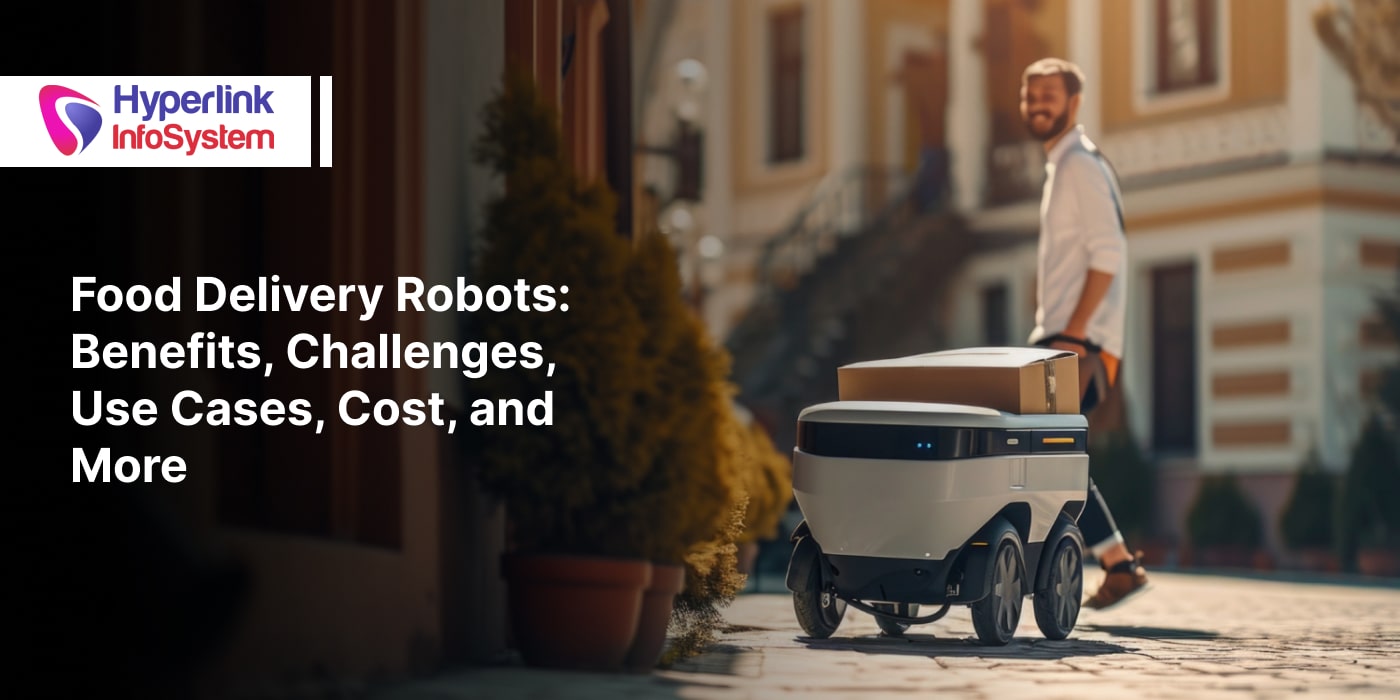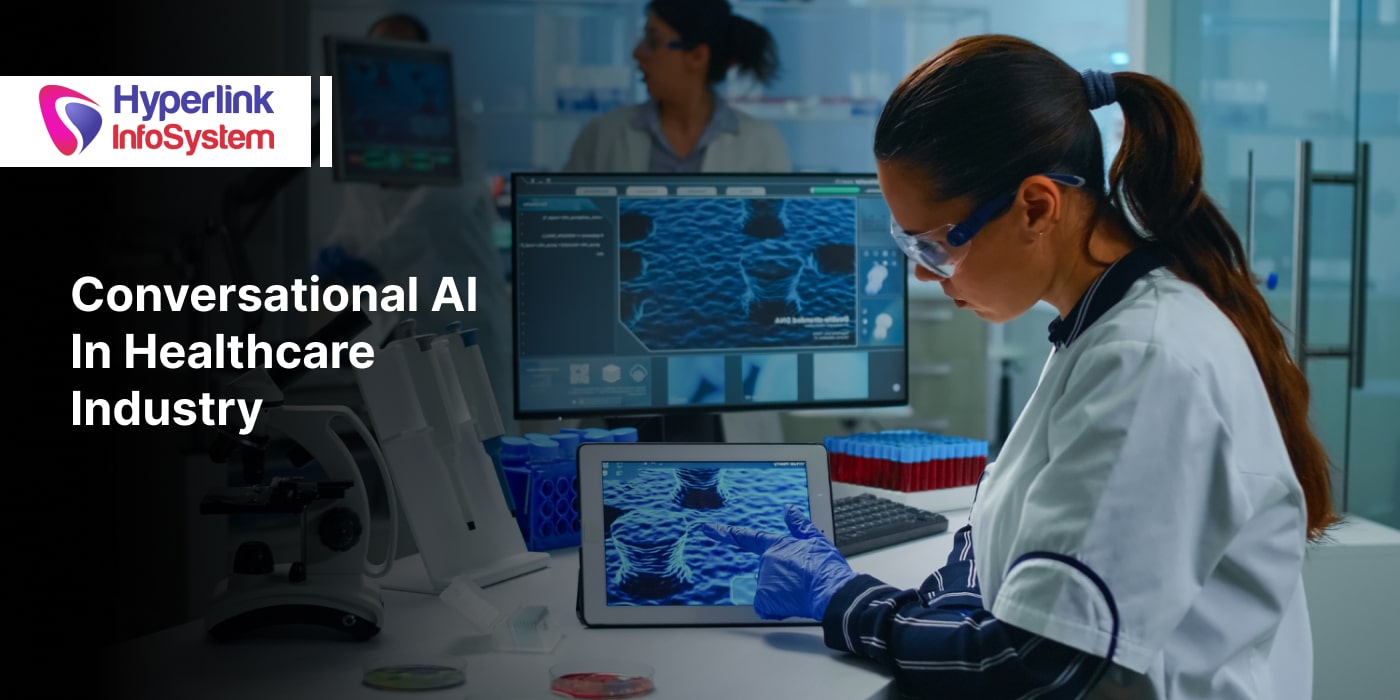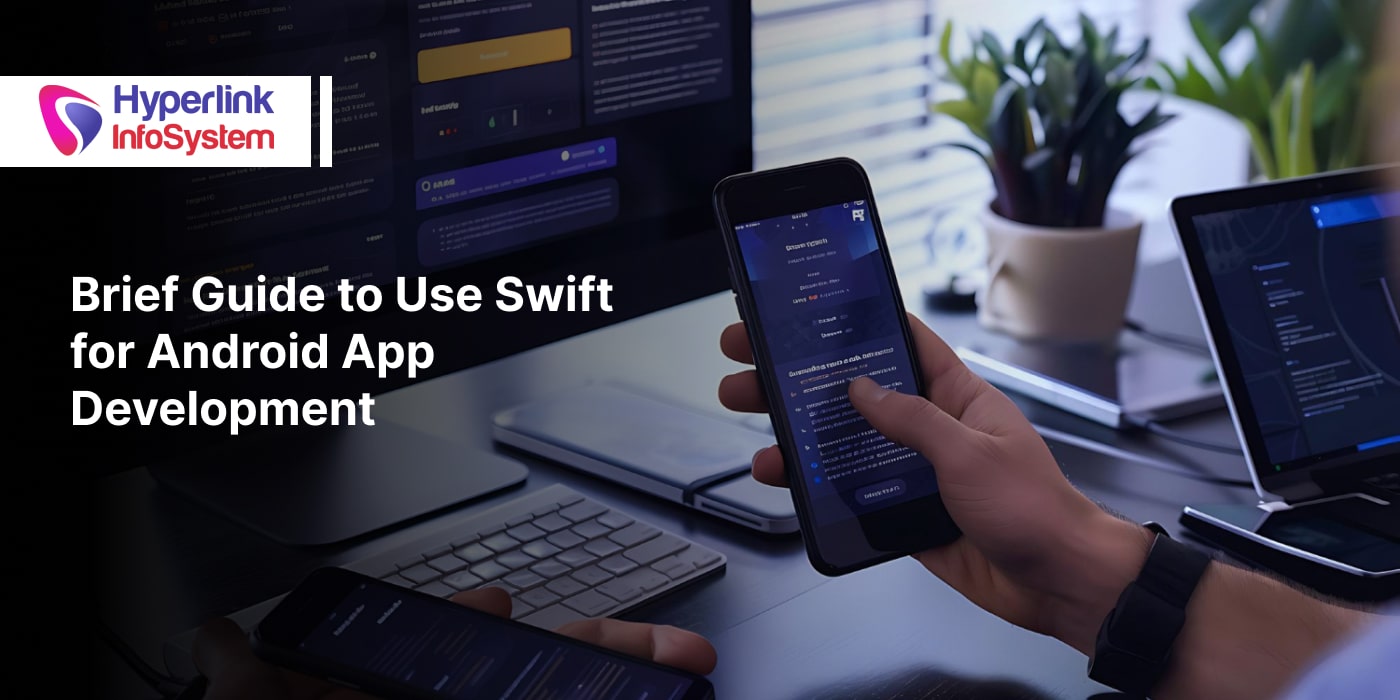Laravel Meets AI: Building Intelligent Web Apps
Nov 2025

Laravel remains the top choice for web app development companies due to its unmatched security, scalability, and rapid development. However, the evolution of Laravel is here with AI and ML integration. How will it change the face of web app development? This blog will delve into the details and provide more information.
Introduction
Artificial intelligence and machine learning have entered every industry. Web app development is no exception. While React and Angular are the top favorites for web app development, Laravel holds a special place. As of now, 636,000 live websites use Laravel, plus it ranks 76th on GitHub’s top 100 PHP languages list.
However, every programming language and framework has to keep up with the changing times. Many of them have integrated with AI and ML, so how could Laravel be left behind? After 2021, data-driven, intelligent apps have become the norm. To create innovative and data-driven apps, dedicated Laravel developers and companies integrate AI/ML in their apps.
Having said that, integrating AI and ML in Laravel is not straightforward. It requires a structured and planned approach. Advanced AI/ML integration requires significant infrastructure investment and a deep understanding of its core concepts. In this blog, we will discuss the steps to integrate AI/ML in Laravel, challenges, best practices, and more. Let’s get started.
Why Is Laravel Ideal for AI and ML Integration?
Laravel blends powerful backend capabilities with an ecosystem that is beneficial for developers. This makes it easier for developers to build secure and scalable web apps. It provides a stable foundation for companies to integrate AI and ML models with web apps.
Thanks to Laravel’s thriving ecosystem and modular architecture, developers can focus on developing AI-focused features without wasting time on setup and integration. The best part is that they don’t have to compromise on efficiency or security. Below are some reasons why Laravel is ideal for AI and ML integrations.
1) Modular Architecture and API-First Design
Laravel has a modular architecture that enables developers to create apps with smaller, breakable parts called self-contained modules. Understand that Laravel is excellent for creating RESTful APIs. These APIs can help integrate the app with AI/ML platforms such as OpenAI and TensorFlow.
Developers don’t have to endure the pain of building apps from scratch within the Laravel framework. All they have to do is use Laravel’s pre-packaged services to integrate with their custom AI models. Laravel will manage data flow, security, and deliver the results that companies want.
2) Robust Ecosystem for Data and Jobs
With Laravel, developers can run AI and ML-related tasks without affecting overall system performance or efficiency. Queries and jobs help process tasks like predictions, recommendations, and training jobs in a non-blocking way. This means that the complex task will run in the background while the main threads handle other tasks.
Task scheduling ensures companies can plan their tasks to be performed at a specific time. This prevents system overloading and frees up resources. Laravel’s Eloquent ORM simplifies working with large datasets. Fetching, storing, and organizing data for AI models becomes straightforward.
3) Security and Authentication
AI-powered apps usually handle sensitive data like financial data or tailored recommendations. Laravel has built-in tools to handle data security. These tools help control who can view data and to what degree. Examples of such security features include API tokens, Sanctum, and Passport.
Acting like digital keys, these features allow only authorized users/systems to receive or send data. Thus, businesses can ensure data security using Laravel.
4) Scalability and Performance
Usually, when developers integrate AI and ML in web apps, it results in a considerable dip in performance. This is not the case with Laravel. The queue system solves this problem through asynchronous processing. Making predictions or analyzing vast volumes of data takes up a lot of time and computing power. Trying to accomplish these tasks during peak business hours can be counterproductive.
With Laravel, these complex and power-guzzling tasks go on in the background without affecting other areas. Overall, company employees can perform their tasks while the AI/ML tasks happen simultaneously. In this way, Laravel makes it possible for systems to complete more tasks without compromising performance or efficiency.
5) Works smoothly with Python/AI Libraries
Even though most ML learning models are built on the foundation of Python, Laravel integrates with them easily. For instance, Laravel can run a Python script using Symfony Process to make accurate predictions. It can also communicate with Python microservices such as TensorFlow or PyTorch to perform complex AI tasks.
Furthermore, Laravel can also use AI models in the cloud. This means companies don’t have to get into the hassle of running these models on their servers. Thus, Laravel acts as a mediator between Python and the web app to perform tasks in real-time.
6) Front-End and User Experience
Laravel integrates seamlessly with tools such as Livewire and Vue that are instrumental in creating interactive and dynamic websites. Laravel is great for the following:
- Build real-time, interactive dashboards that update as and when new data arrives.
- Display live analytics and monitor AI model predictions.
- Tracking user behavior
- Visualize trends dynamically, meaning it displays patterns or changes, or even responds to user interactions.
- Provide personalized product recommendations and alerts.
- Enable complex user interactions.
In short, Laravel helps companies build web apps that must deliver real-time insights. Examples of such real-time apps include recommendation systems, AI-powered chatbots, and analytics tools.
7) Community and Packages
Thanks to ready-to-use packages in Laravel, such as laravel-ai, companies can use them to ensure smooth integration with AI services. Without these packages, developers would have to spend hours writing complex code. Other valuable in-built features in Laravel include secure user logging, data storage, API building, and asynchronous task handling.
As Laravel does most of the heavy lifting, including designing the foundational web infrastructure, developers can focus on other productive tasks (such as data analysis and making predictions).
5 Benefits of Using AI and ML in Laravel
Below are the top five benefits of AI and ML integration in Laravel.
- Personalization - Delivers tailored content and recommendations. Ensures personalized user experience.
- Automation - Streamlining mundane and repetitive tasks such as form validation, fraud detection, or answering generic customer queries.
- Data Insights - Analyze huge volumes of data to make predictions, spot trends, and enable informed decision-making for companies.
- Improved UX - Enable innovative features like voice-powered searches, natural language searches, or image tagging.
- Scalability - Combines Laravel’s robust backend with AI models to create scalable and intelligent web solutions.
7 Best Laravel AI Frameworks and Tools to Use for Building Web Apps
Laravel’s rich ecosystem boasts several frameworks, tools, starter kits, and packages. However, we have listed out 7 of the best AI frameworks and tools that enable developers to build scalable web apps.
1) Prism
Prism is a popular Laravel package that works seamlessly with large language models such as OpenAI and Ollama. Its key features include Fluent API, switching providers, structured outputs, system outputs, and more.
2) LarAgent
LarAgent is an agent-based AI within the Laravel framework. It helps companies build and manage Laravel agents within a Laravel app using syntax and patterns that Laravel developers are familiar with.
3) Laravel AI Toolkit (endritvs/laravel-ai-toolkit)
Support the integration of OpenAI and AWS Claude. It switches to a different AI if one of the models fails. It also provides a fluent API similar to Laravel for building clear prompts.
4) Laravel MCP
Laravel MCP (Model Context Protocol) is the official library. It facilitates smooth integration with AI models like ChatGPT. Using Laravel MCP, developers can expose data, tools, and prompts in a structured format. This helps AI understand them and deliver the best results.
5) Laravel AI Chat Starter Kit
Starter kit with a readymade Laravel project. It includes a chat interface where AI responses stream live as soon as they are generated. Built-in features include Prism, Inertia.js, and Vue.js, which can connect with multiple AI providers.
6) Creative Crafts/Laravel AI Assistant
The package provides a fluent API to interact with OpenAI using clean and readable code. This is effective for handling tasks like chats and transcripts. Eliminates the need to write complex code; simple English would suffice.
7) Regulated/Sensitive Data
Helps build a Laravel app that integrates with AI models using custom models. It also manages prompts and context carefully to ensure privacy and control of data. This data includes data sent to AI, responses generated, and how data is stored within the app.
Companies must gain a complete understanding of Laravel’s features, best practices, and ecosystem tools. This will help them leverage the full potential of the Laravel development framework and develop innovative apps.
How to Implement AI and ML in Laravel for Building Web Apps
Below is a step-by-step process to implement AI and ML in Laravel.
- Set up a Laravel Project
Install Laravel using Composer and configure .env for database, queries, and API keys.
- Choosing the Right AI/ML Service
Choose third-party APIs such as OpenAI or AWS. Alternatively, you can host custom models via REST.
- Data Handling and Pre-Processing
Validate, clean, and format data so that AI models can use them. (CSV, JSCON, and embeddings).
- Implement AI/ML Logic
Integrate AI with your Laravel app using APIs, a Python microservice, or PHP libraries. All of this must be organized clearly into reusable, modular code blocks.
- Create Controllers and Routes
Allow controllers to handle requests. Server classes will perform the AI work. Define API routes to send responses.
- Set Up Background Jobs
For complex tasks, such as image recognition or training, use jobs and queries. This ensures high performance and async processing.
- Deploying Models in Production
Use Docker, Kubernetes, or cloud services to deploy, scale, and manage your web app. They can also help protect API keys.
Need help with implementing AI and ML within your web app? Partner with a Laravel development company for step-by-step guidance and support.
8 Biggest Challenges of AI & ML Integration in Laravel
Lack of Native AI/ML Support in PHP
Solution - Use Python services using APIs or microservices.
Performance Overheads with Large ML Models
Solution - Don’t compel Laravel to handle system-intensive AI/ML tasks during user requests.
Slow Real-Time Inferences
Use caching that saves results after computation. Perform computations before users demand them and store the results for later.
Complexity of Data Preprocessing
Since Laravel is not suited for heavy data processing, allow Python to handle it. Alternatively, a separate data pipeline tool like Apache Airflow can also handle this.
Security Risks During AI API Integration
Check and clean the data going in and out of the AI API. This will ensure that no malicious, broken, or unwanted data gets inside the system.
Versioning and Model Updates
Keep separate labeled versions of the AI model. Give each version its unique API link. This ensures that old and new versions can run without issues.
Limited PHP ML Libraries
Allow Python ML libraries to handle the complex tasks. Laravel can use Python to get answers using background jobs or simple web requests.
Scalability for High-Load AI Tasks
Use cloud-based ML services or distributed processing.
Struggling with Laravel app development for your business? Consider teaming up with a reputed AI development company near you.
8 Best Practices for AI and ML Integration in Laravel
Integrating AI and ML in Laravel need not be difficult. Follow the 8 best practices below, and everything should be fine.
- Use APIs or microservices for ML-related tasks instead of running models directly within PHP.
- Leverage queues and jobs to handle complex ML processing tasks asynchronously.
- Store AI/ML computation results (cache predictions) in cases where real-time results are not required.
- Ensure that only authorized users can access the AI APIs. Check data thoroughly during exchange to verify its safety and accuracy.
- Keep track of different versions of AI models. This will make it easy to switch to the older version without affecting the app.
- Check and monitor AI/ML issues and identify errors proactively. This will help fix issues in time to ensure optimal performance.
- Scale effectively using cloud services when handling complex tasks or AI models.
- Prepare and clean data using a Python pipeline before Laravel uses it to perform AI/ML tasks.
- Ensure the API sends only the necessary data. This improves performance and speed.
- Conduct thorough testing to ensure stability and accurate results.
Want to experience the benefits of AI/ML integration with Laravel apps? Hire dedicated Laravel developers for your next project.
Conclusion
Integrating AI and ML with Laravel is not a fad or a temporary trend. It is here to stay, especially with the increasing demand for personalization, data-driven decision-making, and scalability. Most importantly, the integration is cost-effective while delivering greater innovation and improved performance. Using Eloquent ORM, queue jobs, and API-ready controllers, Laravel speeds up backend development. The time required to complete such tasks is reduced significantly by almost 20 to 40 percent. It would make sense to hire a dedicated Laravel developer to experience these benefits.
In the future, Laravel’s focus will evolve greatly, and its use won’t be restricted to web app development. In fact, it will become smarter and help companies create apps that go beyond responding to user needs. Over time, Laravel will anticipate customer needs, learn from their actions, and adapt accordingly. This will help it evolve as a stronger and more efficient version of itself.
Frequently Asked Questions
Laravel development services cover more than web app development. Development companies choose Laravel because of its scalability, advanced security features, and ability to handle complex workflows. Below are the services that fall under Laravel development.
- Web Application Development
- E-Commerce Development
- Enterprise Application Development
- API Development and Integration
- Custom Module and Plugin Development
- CMS Development
- Laravel Migrations and Updates
- Testing and QA
Hiring dedicated Laravel developers is the right move for companies that aim for faster development and specialized expertise while ensuring scalability and cost-effectiveness. Below are the steps to hire dedicated Laravel developers for a project.
- Define project requirements.
- Choose the right hiring model.
- Search for candidates on different platforms.
- Evaluate technical skills and past work.
- Conduct interviews.
- Negotiate terms and bring the employee on board.
Laravel-powered apps are required to be more scalable, deliver high performance, and be flexible enough to handle evolving needs. The enhanced testing tools ensure higher code quality and reliability. Below are the top Laravel trends for 2025 and beyond.
- AI-powered Laravel Apps
- Microservices Architecture
- Serverless Deployment with Laravel Vapor
- Real-time Applications Using Broadcasting
- Cloud Native and Hybrid Stack Architectures
- Enhanced Testing with Dust and Pest
Whether building a simple app or an enterprise-grade solution, choosing the top Laravel development tools streamlines processes and boosts productivity. Below is a list of the best Laravel development tools that developers can use for their projects. Each has its specific uses.
- Laravel Forge - Used for server configuration and deployment.
- Laravel Envoyer - Developed for zero-time deployment.
- Laravel Debugbar - Complete debugging toolbar.
- Laravel Mix - Simplifies Asset Compilation.
- Laravel Snail - Lightweight Docker Deployment for Laravel apps.
- Laravel Passport - For full OAuth2 Server2 Implementation.
- Laravel Socialite - Authenticating Users Through Social Networks.
- Laravel Livewire - Full-stack Laravel Framework to Build Modern and Reactive Interfaces.
Latest Blogs

Is BlockChain Technology Worth The H ...
Unfolds The Revolutionary & Versatility Of Blockchain Technology ...


IoT Technology - A Future In Making ...
Everything You Need To Know About IoT Technology ...

Feel Free to Contact Us!
We would be happy to hear from you, please fill in the form below or mail us your requirements on info@hyperlinkinfosystem.com
Hyperlink InfoSystem Bring Transformation For Global Businesses
Starting from listening to your business problems to delivering accurate solutions; we make sure to follow industry-specific standards and combine them with our technical knowledge, development expertise, and extensive research.
4500+
Apps Developed
1200+
Developers
2200+
Websites Designed
140+
Games Developed
120+
AI & IoT Solutions
2700+
Happy Clients
120+
Salesforce Solutions

40+
Data Science

















